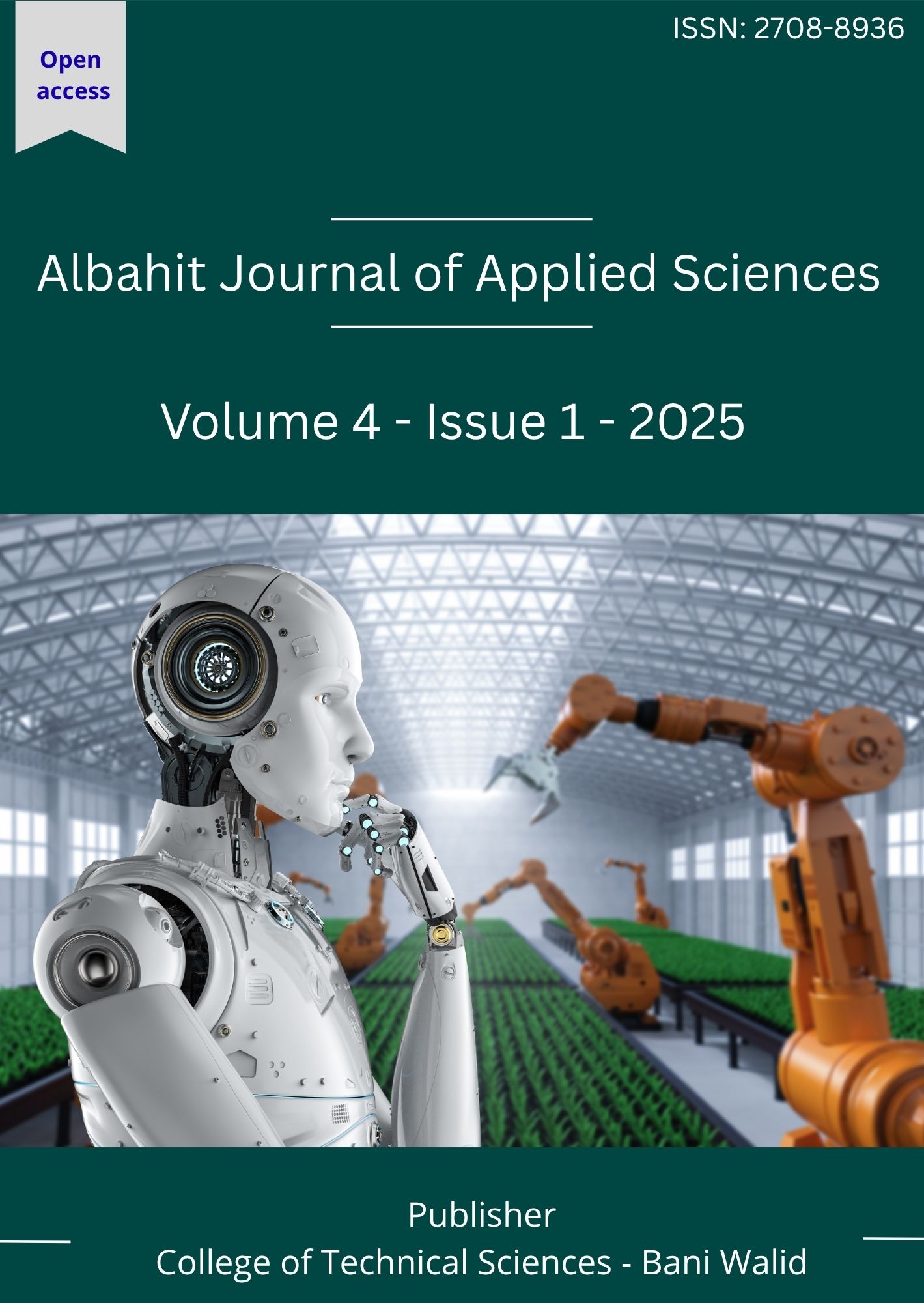الموصلات الفائقة ذات درجة الحرارة العالية: خصائصها الفيزيائية وتطبيقاتها التكنولوجية
الكلمات المفتاحية:
الموصلية الفائقة، الموصلات الفائقة ذات درجات الحرارة العالية، درجة الحرارة الحرجة-، المقاومة الصفرية، المغناطيسية المثالية، التيار الحرج، - تأثير ميسنرالملخص
الموصلية الفائقة هي ظاهرة فيزيائية فريدة تم اكتشافها قبل أكثر من قرن مضى. بشكل عام، يمكن تمييز الموصلية الفائقة بثلاثة خصائص أساسية وهي: المقاومة الصفرية، والدايامغناطيسية المثالية ، وظاهرة الكم المجهرية ( والتي تعرف باسم نظرية BCS). ومع ذلك، فإن المواد التي تمتلك مثل هذه الخصائص الهامة عند تعرضها لدرجة حرارة أقل من درجة الحرارة الحرجة ( Tc) تصبح مواد فائقة التوصيل. ونتيجة لذلك، فإن هذه المزايا تفتح العديد من الفرص أمام الباحثين والعلماء لفهم أفضل للألغاز الكامنة وراءها. كما، تلعب الموصلات الفائقة عالية الحرارة (والمختصرة بHTS) دورا مهما في العديد من التطبيقات والمجالات التكنولوجية، وبالتالي فإنها تستخدم النيتروجين السائل (LN) عند تبريد العينة، مما يعطيها درجة حرارة حرجة مقارنة ب الموصلات الفائقة التقليدية، والتي تستخدم الهيليوم السائل (LHe) في عملية التبريد. من وجهة النظرهذه، بدأ استخدام مثل هذه المواد في معظم التخصصات وتقنيات التطوير الحديثة. وفي الواقع، فإن درجة الحرارة الحرجة للمواد فائقة التوصيل في ازدياد مستمر تدريجيا ولكنها لاتزال غير قريبة من درجة حرارة الغرفة، والتي لاتزال حلما لم يتحقق بعد، بسبب التكلفة العالية والحاجة الي ثلاجات لتطبيقاتها بالمقارنة مع الموصلات التقليدية. يركز هذا البحث على تاريخ الموصلات الفائقة ذات الحرارة العالية، كما يسلط الضوء على سلوك هذه المواد الفائقة التوصيل، ودراسة خصائصها الأساسية وتطبيقاتها في تقنية النانو.
المراجع
[1] Hussan, N. Q.A., Taha, A.A., & Ahmed, D.S. (2021). Characterization of Treated Multi-Walled Carbon Nanotubes and Antibacterial Properties. Journal of Applied Sciences and Nanotechnology, 1(2): 1-9.
[2] Ramsden, J.J. (2005). What is nanotechnology? Nanotechnology Perceptions, 1(1): 3-17.
[3] Awan, I.Z., Hussain, S. B., Haq, A. ul., & Khan, A. Q. (2016). Wondrous Nanotechnology. Journal of the Chemical Society of Pakistan, 38(6): 1026-1055.
[4] Hussein, A. A. A., Hussein, A. M.A., &N.A. Hasan, N.A. (2023). Study of the Properties of YBCO Superconductor Compound in Various Preparation Methods: A Short Review. Journal of Applied Sciences and Nanotechnology, 3(1): 65-79.
[5] Tegart, G. (2003). Nanotechnology: The Technology for the 21st Century. The Second International Conference on Technology foresight, 1-12.
[6] Dahal, K. P. (2011). Superconductivity: A centenary Celebration. The Himalayan Physics, 2: 26-34.
[7] Abd-Shukor, R. (2004). Introduction to Superconductivity in Metals, Alloys & Cuprates. Tg Malim: Universiti Pendidikan Slutan Idris.
[8] Mangin, P., & Khan, R. (2017). Superconductivity an Introduction. Springer International Publisher AG.
[9] Rahman, Md. A., Rahaman, Md. Z., & Samsuddoha, Md. N. (2015). A Review on Cuprate Based Superconducting Materials Including Characteristics and Application, 3(2): 39-56.
[10] Charles.P. Poole, Jr., Prozorov, R., Farach, H, A., & Creswick, R. J. (2014). Superconductivity Third Edition. Elsevier Inc. 870.
[11] Charles P. Poole, Jr. (2000). Hand Book of Superconductivity. Academic Press, USA. 693.
[12] Soltan, S. (2005). Interaction of Superconductivity and Ferromagnetism in YBCO/LCMO Heterostructures. Cuvillier Verlag Gӧttingen. 155.
[13] Kruchinin, S. P. (2014). Physics of High-Tc Superconductors. American Scientific Publishers. 2(2): 1-22.
[14] Malik, M. A., & Malik, B. A. (2014). High Temperature Superconductivity: Materials, Mechanism and Applications. Bulgarian Journal of Physic, 4: 305–314.
[15] Schlepütz, C, M. (2009). Systematic Structure Investigation of YBCO Thin Films with Direct Methods and surface x-ray Diffraction. PhD thesis, Doctor of Natural Sciences (Dr. Sc. nat.) submitted to the Faculty of Mathematics and Natural Sciences of the University of Zurich.
[16] Klemm, R, A. (2012). Layered Superconductors: Volume1. OUP Oxford. 559.
[17] Azzouz, F. B., Zouaoui, M., Mani, K. D., Annabi, M., Tangelo, G. V., & Ben Salem, M. (2006). Structure, microstructure and transport properties of B- doped YBCO system. Physica C, 442(1): 13-19.
[18] Holder, A. B., & Hugo Keller, H. (2020). High-temperature superconductors: underlying physics and applications. Journal of Chemical Sciences, 75(1-2):3-14.
[19] Elfaki, A. A. A., Elamin, A. A., Abd-Alla, M. D., Elgani, R. A., Mohammed, A. S.,
Mo hammed, A. A., & Elhouri, S. A. (2017). The Effect of Temperature on Conductivity of Conductors and superconductors. American Journal of Physics and Applications, 5(1): 1-5.
[20] Hasan, M. S., & Ali, S. S. (2022). Properties and Types of Superconductors. Materials Research Forum LLC, 132: 17-48.
[21] Fagaly, R, L. (2006). Superconducting quantum interference device instruments and applications. Review of Scientific Instruments, 77(10): 1-45.
[22] Beriso, A. (2019). Superperconductors, Their History and Applications. Advances in Physics Theories and Applications, 77: 6-13.
[23] Lembereger, L. (2016). Vortex lattice in conventional and unconventional superconductors. PhD thesis, university of Birmingham.
[24] Cohen, L. F., & Jensen, H. J. (1997). Open questions in the magnetic behavior of high-temperature superconductors. Institute of Physics Publishing, 60: 1581–1672.
[25] Sezer, B, S. (2010). Fabrication of Lu doped YBCO Thin Films by Pulsed Laser Deposition Technique and Their Characterization. Master of Science thesis in Physics, İzmir Institute of Technology.
[26] Hughes, D, D. (2001). The Critical Current of Superconductors: an historical review. Fizika Nizkikh Temperature, 27 (9/10): 967-979.
[27] Abd- Shukor, R. (2009). High Temperature Superconductors: Materials, Mechanisms and Applications. Academy of Sciences Malaysia. https://www.researchgate.net/puplication/237220940 .
[28] Qingsong, YU., Kai, LI., Hao, HU., Hongtao, LIU., Nan, S., & Shuai, LIU. (2023).
Research and technological prospects of applications for superconducting electrodynamics
suspension. Electric Drive for Locomotives, (4):1-8.
[29] Shibani, W.M., Zullkafli, M. F., & Basuno, B. (2016). Methods of Transport Technologies: A Review on Using Tube/Tunnel Systems. IOP Conference Series: Materials Science and Engineering.
[30] Jacob, A., & Monteiro, N. (2018). A new concept of super elevation in magnetic levitation -prodynamic. Transportation systems and Technology, 4(4):77-111.







